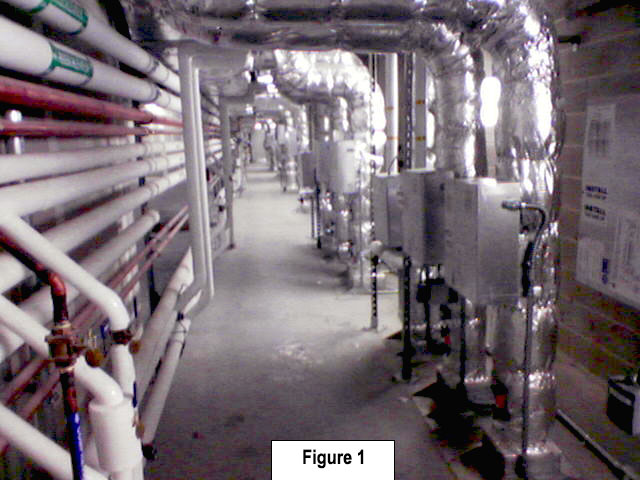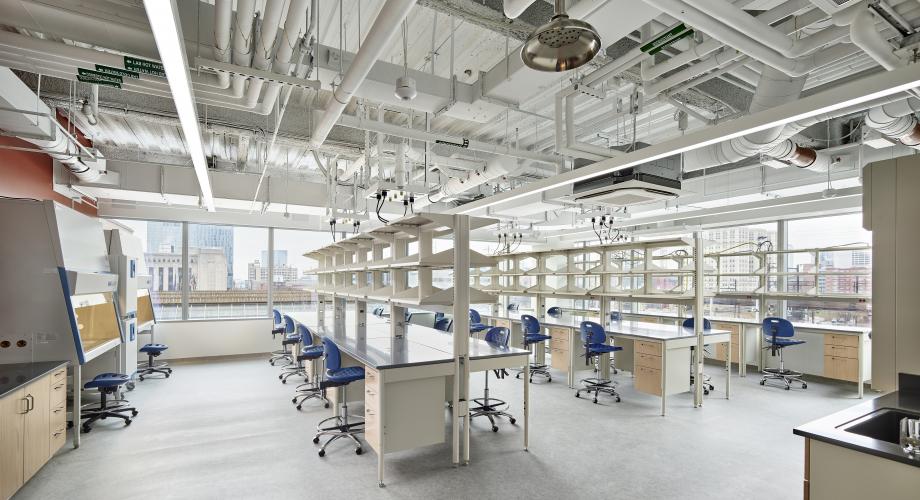Market forces have created an unprecedented demand for laboratory space in urban environments. In the past, lab space was more commonly found in suburban locations within industrial/office parks or sprawling campuses. Urban spaces appeal to smaller startup companies, as well as established firms that wish to be close to universities and other chemistry and biotechnology companies. With an influx of venture capital for life sciences deals, startups have found a source of capital that will continue to fuel demand for laboratory space. The supply of these spaces continues to be tight, forcing developers to become more strategic and speculative. The remote work trend ignited by the COVID-19 pandemic has resulted in a significant amount of available office/corporate space. The influx of capital and available space has led developers to position their existing building stock for conversion. Multiple design strategies are available to accommodate the conversion of office space into laboratory space.
A common challenge when converting existing buildings is their floor heights. When floor-to-floor height is limited, the use of MEP corridors provides an avenue to distribute utilities to serve laboratories. These corridors convey piping and ductwork, including air terminal devices. This alleviates the need to distribute overhead, conserving limited height to accommodate higher ceilings. In one particular space with a floor-to-floor height of 12’-6” (Figure 1), process piping was routed along the wall shared with the laboratory space while air terminal devices were mounted in a vertical orientation on the other side of the MEP corridor. These corridors need to run parallel with the laboratories they serve to limit the routing distance of the piping and ductwork.

In lieu of dedicated electrical rooms, electrical panels required to serve lab spaces can also be located within these MEP corridors. In one installation, as shown in Figure 2 (purple shaded areas), the laboratory space was flanked by two small MEP corridors to avoid crossing supply and exhaust ductwork. Although these corridors consume rental space, they provide a solution for a facility that would normally be overlooked.

Another approach is to locate mechanical spaces adjacent to the laboratory spaces they serve. Air handling units are placed within these rooms immediately adjacent to laboratories on both sides. If the floor-to-floor height is particularly limited, these mechanical spaces may also accommodate air terminal devices serving fume hoods and supplying air to the laboratories. Ideally, these rooms are stacked in a vertical arrangement so that supply and exhaust risers may be routed vertically through them. This strategy is particularly useful for serving clean spaces as well as BSL-3 containment suites that require larger amounts of air to meet high air change rate requirements. A typical clean room approach is indicated in Figure 3. Placing rooms adjacent to these spaces limits the size of the ductwork routed through the laboratories, minimizing spatial requirements above the ceiling.

If space planning and adjacency requirements prohibit the placement of multiple MEP corridors or mechanical rooms within the laboratory spaces, a third strategy utilizes the floor above to serve as mezzanine space to accommodate routing of ductwork, piping, and other MEP utilities. In a high-rise situation, alternate floors would be utilized as mezzanine floors. This strategy is most applicable to buildings containing a significant number of clean spaces and/or BSL-3 containment suite spaces which require large amounts of air circulation, coupled with a facility that has low floor-to-floor heights of 12’-6” and less. Using the floor above the laboratory is also effective for typical laboratories within a facility with extremely low floor-to-floor heights of 10 to 11 feet. Figure 4 (purple shaded area) demonstrates where office space on the floor above was converted into mezzanine space to serve a suite of ISO 7, 8 and 9 clean room spaces.

As the demand continues to grow for laboratory space, the conversion of office facilities into lab spaces provides much needed relief to the available inventory of spaces, as well as a use for idle office real estate. The strategies explained here provide solutions for buildings converting from office to laboratory space that may have been previously overlooked. There are many creative solutions to produce comfortable, safe, and efficient spaces that meet the intense MEP utility requirements and demands of the life science market.

